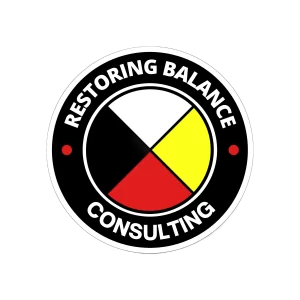Author provides a new perspective to Canadian history
Gerald Kiesman has written a new book giving a unique look at Canadian history through First Nations perspective. Contributed photo Former Prince Rupert resident Gerald Kiesman was in town late last month to promote his self-published book Zero Sum Game, which offers a unique look at Canadian history through the First Nations perspective, as well as the Trauma Healing Kit that he’s developed over 11 years of devoted personal research. Both detailed and concise, Kiesman said he chose to “rewrite Canadian history” to provide a more thorough understanding of Canadian history as it truly affected various Aboriginal groups. “I’ve heard many times, a lot of people get upset about what they hear because most history is really written from a European perspective and not many [Aboriginal people] have come out and talked about how it’s all really impacted us,” he said. The book spans centuries, from pre-settlement to modern time, but only runs about 300 pages and includes photos, hand-created diagrams and graphics to get across a point that is massively condensed, sometimes even in point form. “My goal with this, like with the trauma kit, was to create something that the average person could appreciate,” said Kiesman. “Especially with self-healing books I was finding at the library, I just always found that the books were written in a very academic way and it makes it very difficult for the layman to understand it.” Of German and Haida ancestry, Kiesman was driven to explore his personal history after some personal revelations in the late 90’s that also led to his trauma kit concept. “NHL player Sheldon Kennedy shocked the world when he disclosed that he’d suffered sexual abuse from his [junior] coach,” said Kiesman, explaining the spark that got him starting his own healing. “The way he handled it brought up everything for me and started my own healing.” But because of the academic nature of the books, it took dedicated research to understand, let alone implement, the things the books taught. Upon moving to Victoria in 2000, Kiesman got into counseling and through professional sources, more research and information obtained from professors at UBC and UVIC, Kiesman put together his trauma resource kit, which seeks to identify the source of trauma, provides a detailed description of how trauma affects the mind and body in an easily understandable way and provides exercises to help the healing process. “I grew up seeing the community suffering from the legacy of residential schools and I more or less developed this idea based on community based healing,” said Kiesman. “The guide teaches people to focus a lot on thoughts, to focus on behaviors and to explore every sensory that comes in, to know what kind of an imprint it leaves on the mind and body.” Kiesman’s workshops, which use journaling and art therapy, have been conducted dozens of times across the province in the last year, including about 15 in the Northwest. Healing guides specifically designed for Aboriginal youth, for former residential school students, for Aboriginal people with disabilities and for adults are also available.

